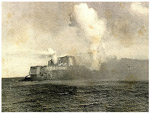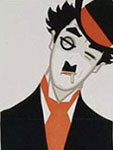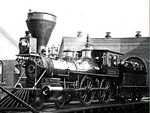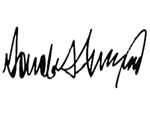What Is It?
Using the premise of a mystery to solve, elementary students act as history detectives as they explore a historical question and analyze carefully chosen clues to formulate and test hypotheses.
Rationale
This strategy depends on our need to solve mysteries. Students are given an opportunity to be active learners as they solve a historical mystery. This strategy relates to what historians do and the process of historical inquiry. Students must work with evidence, form hypotheses, test those hypotheses, and report their findings.
Goals
The goals of the mystery strategy are to learn to: 1. gather, organize, and process information; 2. formulate and test hypotheses; 3. think creatively and analytically to solve problems; and 4. develop, defend, and present solutions to problems.
Teacher Preparation
1. Choose an topic that contains a mystery such as “Why did the American beaver almost become extinct in the 1840s?” Other examples of appropriate historical mysteries include: “How did flooding in Mississippi in 1931 hinder the Civil Rights Movement?”; “Who really invented the cotton gin?”; and “Was the Boston Massacre really a massacre?”
Data should tease the student without revealing too much.
2. Gather primary and secondary sources that will serve as clues for students such as letters, diary entries, maps, statistical tables, political cartoons, images, artifacts for students to touch (in this case beaver fur or felt), and web articles. These sources should pique students’ interest and provide them with clues that will help them generate theories. For example, if students are given a clue regarding the habitat and species characteristics of the beaver and then also told John Jacob Astor was the wealthiest man in America in 1848 it is hoped they conclude that Astor’s wealth had something to do with the beaver. Maps indicating trade routes should confirm this conclusion. Though they may be encountering names in the clues for the first time, making educated guesses is an essential ingredient to the mystery strategy. Students should not be afraid of making guesses or presenting ideas to the larger group. The learning goal is about what it takes to arrive at a hypothesis rather than ending up with a right answer. 3. Decide student grouping. If using small groups, keep individual needs in mind such as reading levels, ability to work with others, and Individual Education Plans (IEPs). 4. Decide how to present the clues to students (strips of paper within envelopes at stations, single sheets of paper for them to cut apart, etc.). See examples of clues for additional clues. Teachers should read through materials to pull clues that fit students’ needs and abilities.
In the Classroom
1. Students read through clues and sort them according to common elements. Once the clues are sorted, students begin to work on their hypothesis. 2. As students analyze the clues and arrive at a hypothesis, use guiding questions such as, “Tell me how the two things relate” and “What’s your reason for thinking that?” to keep students focused on solving the mystery. Avoid guiding them in a direction. The goal is for students to work with the clues and arrive at their own hypothesis. Students can use the Mystery Writing Guide Worksheet to record ideas. 3. In a whole group, have small groups share their hypotheses and evaluate them. Are they logical based on the clues? Do they make sense? Write group responses on the board so students can track their findings as they move through the evidence. The goal is to test each group hypothesis and arrive at the best conclusion. For example, if one group understands there is a connection between the mountain men and the beaver yet they also think the railroads had a role in the problem, do the clues support or refute these ideas? Remind students they are like historians looking at information to form a hypothesis, test it, and arrive at a conclusion.
Students are asked to think about the process of historical inquiry and how it relates to the steps they followed to arrive at a hypothesis
4. Assign each student a written reflection piece on the content learned and the process used to uncover the mystery. This is the most important part of the mystery strategy and should go beyond merely reporting content. Prompt students with questions such as: What happened in the activity? What things did you do well? Most importantly, ask, Which hypothesis best answers the mystery question? Why?
Common Pitfalls
- Data should tease the student without revealing too much.
- Data should hone inference skills.
- Clues should provide information not an explanation (see Mystery Strategy Clues Worksheet).
Example
Students are presented with the following problem: Why did the American beaver almost become extinct in 1840? Write the question on the board so it is visible throughout the activity. Anticipatory Set: Begin by employing a student’s knowledge of science and ecosystems learned earlier. Give a short presentation about the American Beaver. This would include the fact that beavers maintain dams that create ponds. The water level in these ponds is constant, encouraging the growth of vegetation that supports many other types of animals. The dams also keep summer rains and resulting erosion in check. The presentation could end with figures about the number of beavers estimated to be in North America from European settlement to today (see links below). Students would see a significant decline in the population during exploration and settlement. This decline leads students to the essential question and they can begin working with the clues to make hypotheses. Clues: Clues can be obtained from….
- images from fashion catalogs from the mid-1800s;
- real beaver pelt and/or beaver trap, scraps of commercial felt, or images of beaver fur and hats;
- short biographical sketches of mountain men such as Kit Carson, John Liver-Eating Johnston, and William Sublette;
- Advertisements for beaver products such as top hats and ads from trading companies seeking hunters. Scroll down through each page for the aforementioned images.
- newspaper accounts regarding skirmishes/battles between the Iroquois Confederation/other tribes in the Great Lakes region in the Beaver Wars;
- Quotes from all parties involved in the fur trade (Native American chiefs, trading company owners such as Manuel Lisa, mountain men, etc.)
- Pictures of people wearing beaver hats;
- John Jacob Astor.
Be sure to use some visuals! Reflection: Students reflect on the original question by presenting their hypotheses in written form. Along with their response about the disappearance of the beaver, students are asked to think about the process of historical inquiry and how it relates to the steps they followed to arrive at a hypothesis.




